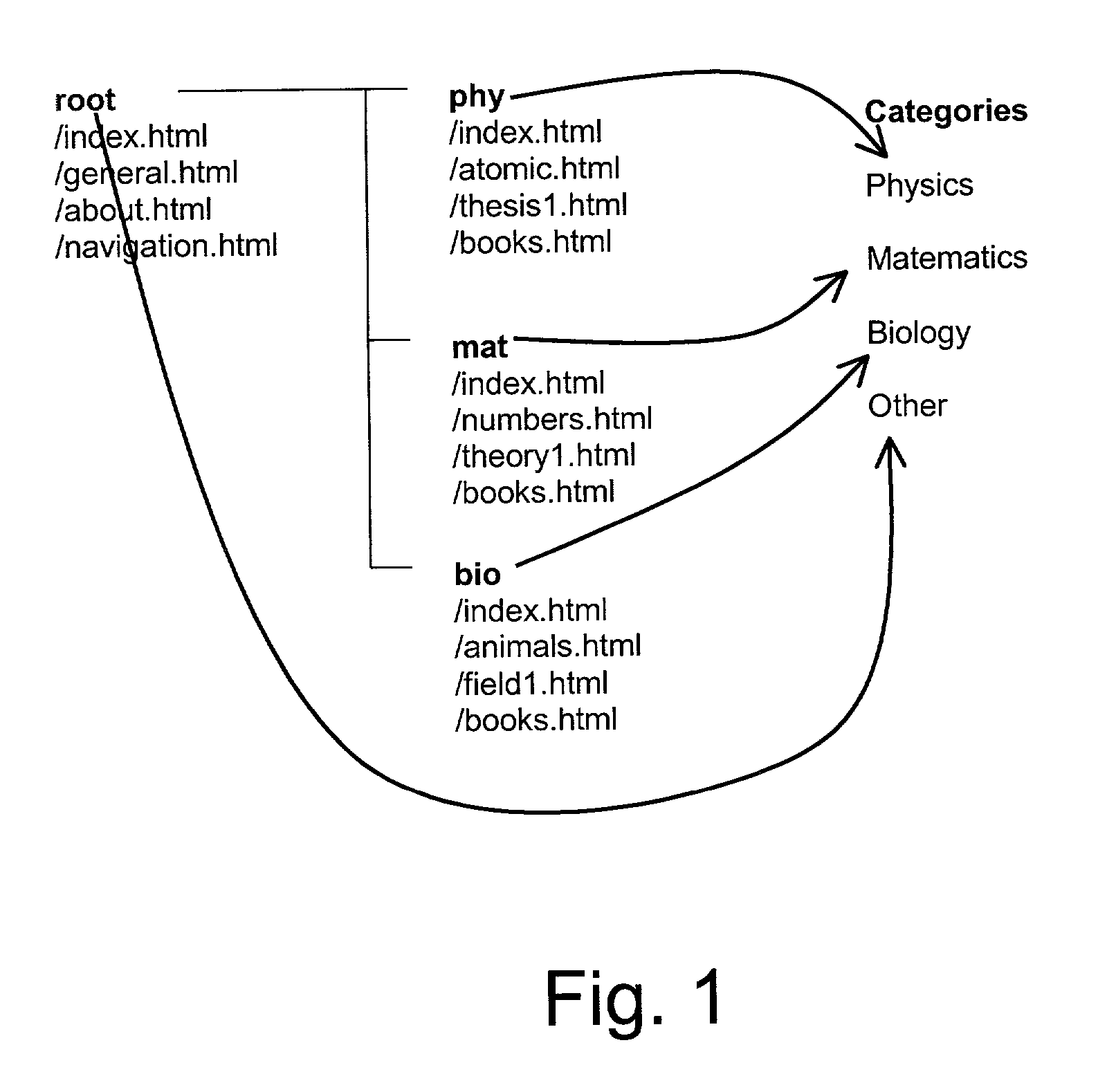Categorisation of data entities
a data entity and categorisation technology, applied in the field of cat, can solve the problems of not being expressive, requiring a huge number of logical operations, and no information has been made available concerning web pages belonging to the same subject matter, and achieve the effect of speeding up the categorisation
- Summary
- Abstract
- Description
- Claims
- Application Information
AI Technical Summary
Benefits of technology
Problems solved by technology
Method used
Image
Examples
Embodiment Construction
[0078] In the following preferred embodiments of the method according to the present invention will be described by way of examples and with reference to FIG. 1 accompanying the examples, which figure shows:
[0079] linking of items located at a web site during a crawling process and categories.
[0080] The method will be described in at least two sections, one describing the actual categorisation and one describing the use of the categorisation result.
Categorisation
[0081] In order for the categorisation to be carried out data-items, or information relating thereto, to be categorised must somehow be provided. In the preferred embodiments described herein the categorisation is applied to data-items being documents such as web pages located on a web site, but the method according to the invention is, of course, not limited to categorisation of such documents.
[0082] Such web pages are uniquely defined by a URL, a uniform resource locator, being such as file name and path, and documents are...
PUM
 Login to View More
Login to View More Abstract
Description
Claims
Application Information
 Login to View More
Login to View More - R&D
- Intellectual Property
- Life Sciences
- Materials
- Tech Scout
- Unparalleled Data Quality
- Higher Quality Content
- 60% Fewer Hallucinations
Browse by: Latest US Patents, China's latest patents, Technical Efficacy Thesaurus, Application Domain, Technology Topic, Popular Technical Reports.
© 2025 PatSnap. All rights reserved.Legal|Privacy policy|Modern Slavery Act Transparency Statement|Sitemap|About US| Contact US: help@patsnap.com

